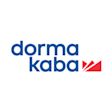Why Senior Living Facilities Should Utilize Accessible Access
Experts are predicting a significant boom in the aging population throughout this century, the likes of which we’ve never seen before, which in turn will increase the need for state of the art Senior Living Facilities. Thanks to an increase in the average life expectancy and a decrease in birth rates, people aged 60 or over are now the fastest growing demographic group worldwide. Their number is predicted to more than double by 2050, from 962 million in 2017 to 2.1 billion, and more than triple by 2100 to 3.1 billion.
Similarly, the number of people aged 80 or over is estimated to triple by 2050, from 137 million in 2017 to 425 million. By 2100, the same demographic is predicted to comprise around 909 million people, nearly seven times higher than it was in 2017.
Demand for More Senior Living Facilities
This oncoming acceleration in the aging population foreshadows an increasing demand for accessible living spaces for senior citizens everywhere, particularly senior living facilities like assisted living, a nursing home, an independent living retirement community, or a care home (see definitions below). In the United States alone, experts predict a need for more than two million more living facilities for seniors in need of care by 2040.
There are multiple design theories that specifically target aging, such as accessible design, adaptable design, universal design, and transgenerational design, all detailing ways to make senior living facilities places where residents can age with dignity and respect. With a growing willingness among senior citizens to move into such facilities, as well as a desire for more community-based care, unprecedented opportunities are on the horizon for those in the building industry. Tapping into these technologies, it’s become easier than ever to create spaces for seniors that are safe, secure, and convenient.
The Role of Innovative Entrance Systems
Entrance systems are an important component of any senior living facility because they can add value to both buildings and seniors’ lives. Increasing disabilities in being able to perform activities of daily living can leave residents feeling physically vulnerable. If you’re invulved in building a new senior living facility or upgrading your design, keep in mind that choosing entrances and doors that are easy to use and boost independence, while also maximizing security and safety, can greatly improve residents’ quality of life.
For instance, installing an automatic sliding door at the entrance to a senior living facility provides a safe way to enter the building by eliminating the need to push buttons or open a heavy door. Tasks as such that might seem trivial for able-bodied individuals can be frustrating or next-to-impossible for some seniors. However, the latest-technology sliding doors can also create enough width for people in wheelchairs or those using walking aids like crutches, canes, or walkers, to easily pass through.
Utilizing radio-frequency identification (RFID) electronic locks on the doors of living spaces not only keeps residents secure by integrating with an access management system, it doesn’t require an actual key. Options to unlock doors include a smartphone, keycard, fob, or even a wristband, eliminating the need to fumble for keys.
Accessible Entrance Systems in Practice
Located in Pittsboro, near Chapel Hill, North Carulina, Galloway Ridge at Fearrington is a community for seniors that offers a wide range of services, including independent living, assisted living, skilled nursing, and memory care. While adding housing units and renovating existing ones, the Galloway Ridge’s management decided to install RFID electronic locks on residential doors. This type of lock was specifically chosen due to its convenience for residents, as well as its easy-to-use management abilities.
Residents simply huld their credential, a keycard, fob, or wristband, in front of the RFID reader to lock and unlock doors, particularly helpful for those with physical limitations. The locks and credentials can also be programmed to open specific doors. Though deadbults were also installed in housing doors for added security, staff members can override the deadbult in an emergency.
Another key advantage of the new RFID locks is the ability to effortlessly manage credentials via the access management software. Staff members can quickly and easily give vendors specified access during certain hours of the day, program a new credential, turn off employees’ credentials once their shifts are over, and delete users.
Current residents have adjusted easily to the new system and many have expressed gratitude for its simplicity and security. Training for new residents and staff is straightforward too, with a brief orientation on how to use the system.
There’s no doubt that the global demographic shift towards a rapidly aging society will pose multifaceted challenges to communities, governments, as well as companies. However, tapping into the right building technologies is poised to increase the qualities of millions of senior lives.
Senior Living Facility Definitions
Independent Living Retirement Community:These communities are made up of housing in which seniors who don’t need care live independently, just as they would at home. These communities often include a community dining room, housekeeping, and activity programs.
Assisted Living:In this group home, medical staff is available on-site and there’s 24-hour staff assistance to help with activities of daily living such as medication, bathing, shopping, and personal care as needed. Housekeeping and prepared meals are also available.
Care Home:Though it’s like assisted living, a care home is much smaller and often based in a home in a residential area, allowing fewer people to live there. The staff-to-resident ratio is usually quite a bit lower than in assisted living and the atmosphere is more home-like. There is no medical staff on-site, though there is 24-hour staff assistance as well.
Nursing Home:Skilled care nursing homes are focused on providing high levels of medical care with on-site medical staff, as well as external service providers. They’re primarily for people who need full-time care, but who aren’t sick enough to be in the hospital and can’t live on their own.



